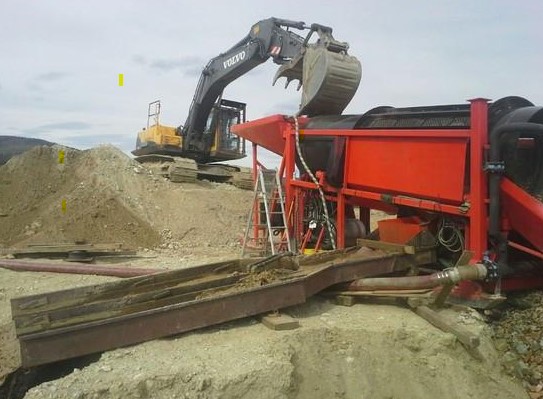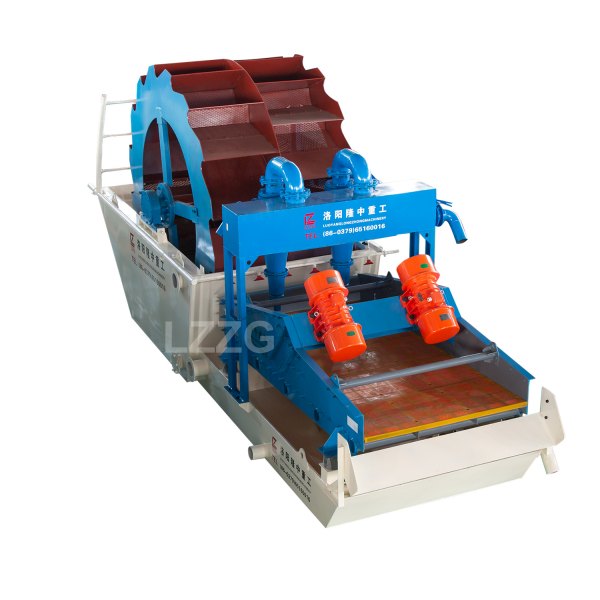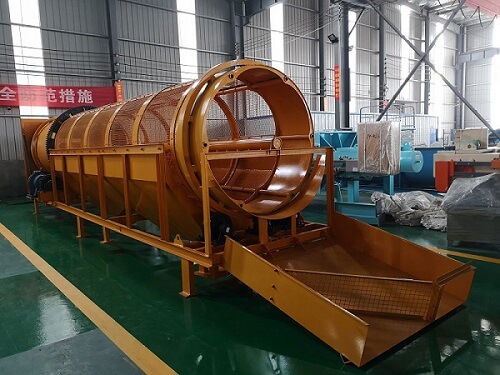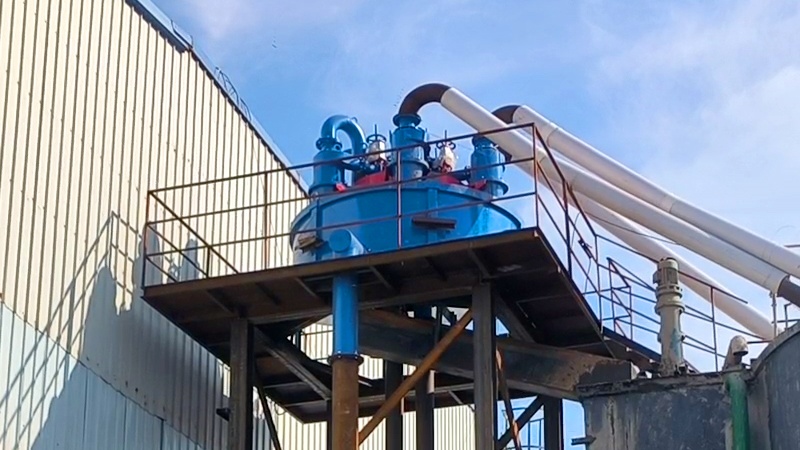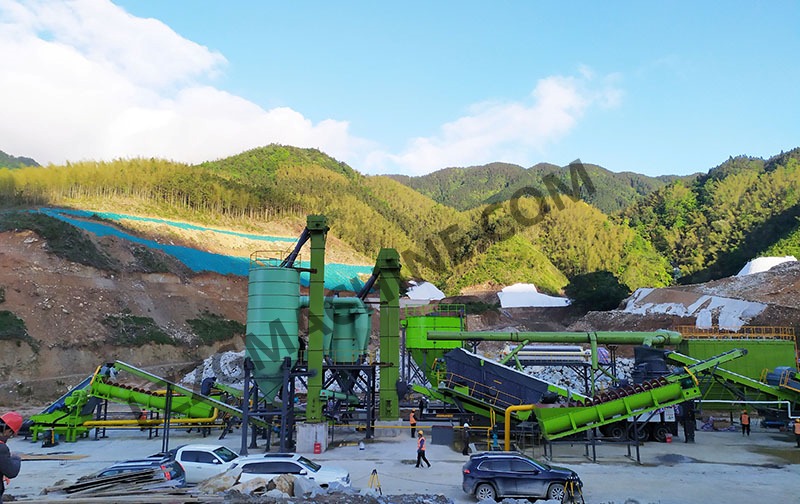Beneficiation method for placer gold mine
 May.05,2021
May.05,2021
The beneficiation principle of placer gold ore is to first use gravity separation to maximize the recovery of gold and its associated heavy minerals from the original ore sand, and then use the combined work of gravity separation, flotation, amalgamation, magnetic separation, and electrostatic separation. Gold and various heavy minerals are separated from each other to achieve the purpose of comprehensive recovery. The sorting of placer gold ore is generally divided into the processes of disintegration and screening, desliming and sorting.
Disintegration and sieving
Many placer gold mines contain cemented sludge, some of which have a particle size greater than 100 mm. If this sludge is not disintegrated, it will be removed with the waste rock during the screening process, causing gold loss. In addition, the mortar can be cemented on gravel or pebbles. If it does not disintegrate, it will cause the loss of gold during the screening process. On the gold dredger, the work of disintegration and sieving is done together in the cylindrical sieve. Interrupted spiral angle steel is installed in the cylindrical screen. During operation, the washing water pressure in the cylindrical sieve should not be less than 35 kPa. In fixed land concentrators, washing beds are set up for disintegration and screening.
Screening homework can eliminate 20-40% of waste rock (gravel, pebbles), which is an indispensable homework for placer gold beneficiation. The determination of reasonable screening parameters must be based on the measurement data of the particle size composition of the gold in the original ore. At present, the sieve holes selected in placer gold mines are generally 10-20 mm. For example, when a fixed chute is used as a roughing equipment, the sieve hole can be larger, but it cannot exceed 60 mm. The screening equipment in the fixed beneficiation plant is mostly grid screens and vibrating screens, while the gold mining ships use cylindrical screens. Water flushing on the screen can not only improve the screening efficiency, but also further break down the cement, so the screening work of placer gold mines is mostly a water screen. The amount of water flushed by the water screen is determined according to the requirements of ore washing, and should try to meet the concentration requirements of the next section of the selection homework. If the chute is roughed, the amount of flushing water should be 8-14 times (volume ratio) of the placer.
Desliming
The materials smaller than 0.1 mm in placer gold generally do not contain gold or contain very little gold, and it is difficult to recover during the sorting process, while the uniform size of sludge interferes with the sorting process, especially the mechanical sorting process. . Therefore, in the mechanical beneficiation plant of a placer gold mine, the idea is to remove the sludge smaller than 0.1 mm. The commonly used desliming equipment in production is desliming buckets of various specifications. The chute selection allows the material size to be wide, and the processing capacity is large, so the chute does not desilt before the selection.
Placer Beneficiation
Practice has proved that the re-selection method is an effective and economical method for dealing with placer gold ore. Because the particle size composition of gold in placer gold mines is different, and the effective particle size limits of the materials processed by various gravity separation equipment are also different, a reasonable placer gold ore separation process should be a joint work of several gravity separation equipment.
The gold-bearing concentrate obtained from the rough selection section has a gold grade of 100 g/ton, and heavy sand minerals are mostly above 1 to 2 kg/ton. There are currently three methods for processing gold-bearing crude concentrate: 1) Manual panning with gold pans After the gold particles are discharged, the heavy sand is discarded; 2) The amalgamation cylinder is used for internal amalgamation, and the amalgam is obtained and the heavy sand is discarded; 3) After the gold is extracted by manual elutriation or amalgamation, the heavy sand is sent to the selection plant for processing. Use magnetic separation, electric separation and other methods to recover various heavy sand minerals.
The gold recovery rate of the placer gold mine: the two-stage chute separation is 70-74%, and the chute rough selection, jig sweeping selection, and shaking table selection process are 75-80%.


